Project Activities
Project activity of CADETES project (Research activity)
A STUDY ON THE CHARACTERISTIC OF THE LOCAL SOLAR INSOLATION IN EAST TIMOR
By : Ruben Jeronimo Freitas, MEngSc
East Timor is a country that located in Tropical area and received abundant amount of sunshine every year. The common practice on using solar panels in East Timor is based on the above assumption since there is no study has been doing on the solar insolation characteristic in East Timor. Therefore, a study should be done to investigate the solar Insolation characteristic of a specific location i.e. in Hera area.
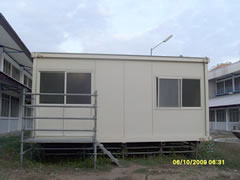 Picture 1: Electrical and Electronic Research Center
Picture 1: Electrical and Electronic Research Center
There are two purposes of this research. The first is to use the available laboratory equipment to measure the local solar insolation characteristic in Hera area instead of using Commercial ones. The equipments we are using are all supported by the Japanese government through JICA-CADETES project in cooperation with Faculty of Engineering UNTL. The second purpose is to provide the solar insolation characteristic of Hera area for the periods of twelve months starts from June 2009 to May 2010.
Merit of the research is to find the effectiveness of available laboratory equipment on measuring solar insolation characteristics while on the other hand the available of solar insolation data will facilitate the precise calculation on the amount of available power and energy at Hera area for the period of one year. We will also introduce the simple research we are doing to students so they can implement later when working in the field.
The research is carried out in the Faculty of Engineering Hera i.e. at Electrical and Electronic Engineering Research Centre.
The equipments we are using are as in the table:
| Equipment | Description |
|---|---|
| 1. PV panel | Shell Solar SJJ10 |
| 2. Resistor | Decade Resistor Type YRH-6BB |
| 3. Oscilloscope | 2ch, 100MHz. 1GS/s |
| 4. Multimeter | SANWA CD800 digital Multimeter |
| 6. Pyranometer | LP Pyra 03 Pyranometer |
Table 1: Research Equipment supported by JICA-CADETES
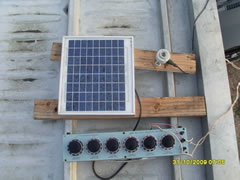 Picture 2: Solar panel, LP Pyra 03 and Decade Resistor
Picture 2: Solar panel, LP Pyra 03 and Decade Resistor
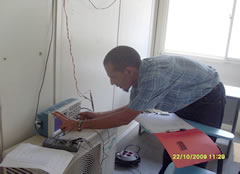 Picture 3: Ruben is checking Oscilloscope and Digital multimeter
Picture 3: Ruben is checking Oscilloscope and Digital multimeter
Data recording was started early in the morning from 6:00 AM and ended at 6:30 PM in the afternoon. The data was recorded manually every half an hour and was written down on the daily data sheet before transfered into the computer data base later on. We recognize that manual data recording is not the best way; however, since we do not have any digital data logger for this purpose it has been an alternative solution to continue the research. The member of the team doing data recording based on the schedule that had been scheduled, where every member had to work at least 4 hours before replaced by other member. All data then transfered into computer data base to be analysed further by the team leader to know the daily local solar insolation characteristic and weekly average solar insolation characteristic.
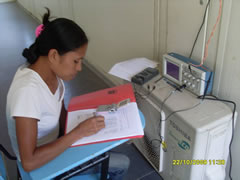 Picture 4: Ms. Olga is writing down the output from Oscilloscope and Digital multimeter to the data sheet
Picture 4: Ms. Olga is writing down the output from Oscilloscope and Digital multimeter to the data sheet
The solar insolation results were calculated based on the output voltage results from solar panel and LP Pyra 03 Pyranometer. The formula used for solar panel was proportional formula which was derived from the plate name at the rear of the panel where the Short circuit current (Isc) value was used to get constant multiplier value. It is well known that during short circuit of a circuit the voltage is Zero so that the short Circuit current will be proportional to irradiance. On the other hand, for LP Pyra 03 Pyranometer the formula has been set and tested in the laboratory by the manufacturer and we just need to transfer the output voltage into the formula to get the value of solar insolation.
After months of research on Hera’s solar insolation characteristic, we would like to present typical solar insollation characteristic of certain days and some results in comparison to other places in the world including temporary conclusion as mentioned on the table below.
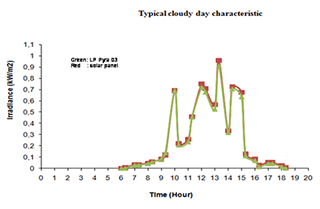 Graph 1: Typical cloudy of solar insolation characteristic
Graph 1: Typical cloudy of solar insolation characteristic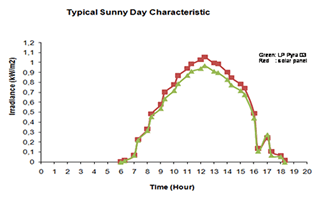 Graph 2: Typical sunny day of solar insollation characteristic
Graph 2: Typical sunny day of solar insollation characteristic
Average Annual Insolation Level
| Place | Annual Insolation | Level |
|---|---|---|
| *Central Australia | 5.89 kWh/m2 per day | Very High |
| *Helsinki,Finland | 2.41 kWh/m2 per day | Very Low |
| **Hera, East Timor | 5.360 kWh/m2 per day | Very High |
| ** Hera (LP Pyra 03) | 5.555 kWh/m2 per day | Very High |
Notes: *Source: http://apricus.com/html/solar_collector_insolation.htm **Temporary calculatio using monthly data of June 2009-February 2010 with the assumption of 12 hours sunlight. ***Temporary calculation using monthly data of August 2009-February 2010 with the assumption of 12 hours sun light.
Table 2: Insolation level of some places in the world
Temporary Conclusion
- Average annual insolation level for Hera is very high thus it will produce huge amount of enrgy.
- The difference results of irradiance might be affected by the measurement instruments’ specifications and the data was recorded manually.
- The difference of ± of 10% of the results will be sufficient to use the equipment for students practice in the laboratory.
- More precise to measure the solar insolation characteristic in East Timor can be done with globally available equipment such as LP Pyra 03 equiped with digital data logger system.
To conclude, Personally I would like to express my sincere gratitude to every people who has giving us supports, suggestions, inputs in order to make this research happen and to produce a good quality of study on solar insolation characteristic. Special thanks to Dr.Daohong Wan from Gifu University of Japan for his time to be consulted with during his stay in East Timor for Short term course, Dr.Rikuo Ogawa for his assistance and input, Prof.Kazama and Mr.Shimazu for given me chance to present my research on the seminar in ETDA and Hotel Timor, my team: Ms.Olga, Mr.Bendito, Mr.Alcino who have been working hard to collect daily data and all friends in the Faculty of Engineering that I might not mentioned one by one here. I just wish that this research may contribute to the development of science and research in East Timor.
- About JICA
- News & Features
- Countries & Regions
- Our Work
- Thematic Issues
- Types of Assistance
- Partnerships with Other Development Partners
- Climate Change / Environmental and Social Considerations
- Evaluations
- Compliance and Anti-corruption
- Science and Technology Cooperation on Global Issues
- Research
- JICA Development Studies Program / JICA Chair
- Support for the Acceptance of Foreign HRs / Multicultural and Inclusive Community
- Publications
- Investor Relations
